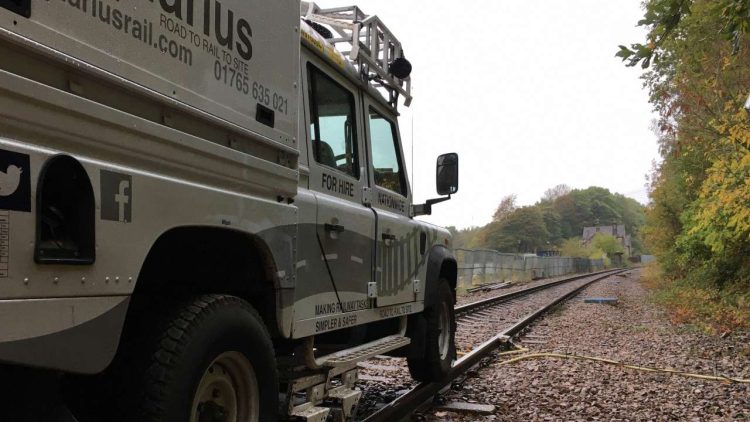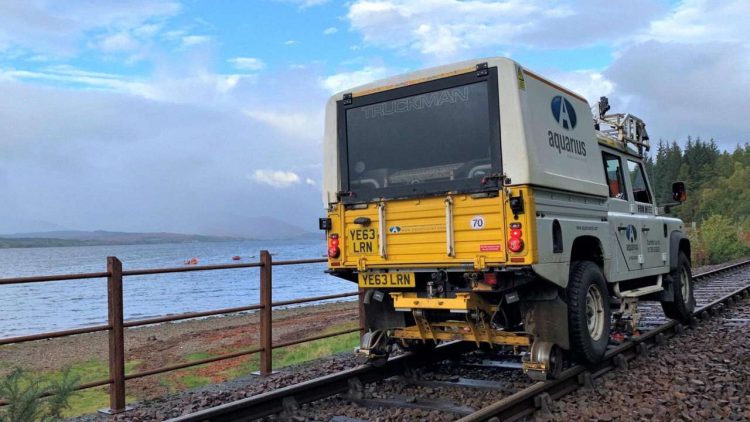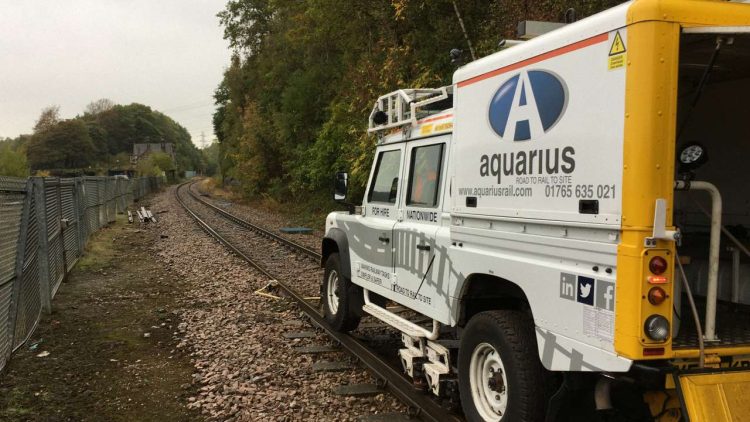A specially adapted 4×4 vehicle that can travel on rails and on the road is being used this autumn to keep Devon’s branch lines clear of leaves on the tracks.
Each autumn, thousands of tonnes of leaves fall onto the railway and stick to damp rails. They quickly break down into a slippery layer that acts like black ice on a road and makes it difficult for trains to stop quickly and causes trains to overshoot signals or platforms.

In a successful trial, the vehicle, known as a Sand Rover, achieved an average reduction of 80% in delays caused by leaves on the tracks. It was designed by Aquarius Railroad Technologies Limited and uses specially mounted wire brushes to clean slippery leaf mulch off the rails as it travels. It also applies a citrus-based treatment to the track, which further helps to break up any leaves, and coats the rails with dry sand to provide a better grip for trains in wet autumn weather.

During autumn 2020, Sand Rover trials on the Tarka line between Barnstaple and Exeter saw an 87% reduction in delays due to fallen leaves compared with previous autumn seasons. Last autumn, the trial was extended to include the Dartmoor line from Exeter to Okehampton.
This year, as well as the Sand Rover, Rail Head Treatment Trains (RHTTs) and traction gel applicators will be used to provide adhesion in key areas. Network Rail uses four RHTTs on its Western route from Cornwall to Paddington, with one based at St. Blazey in Cornwall that is used each night between 6 October and 6 December to clear 340 miles of track across Devon, Cornwall, Somerset, and Wiltshire.

Network Rail also uses three more RHTTs across the route. One in Didcot covers the Thames Valley area and two in Swindon covers the Cotswold area and Cardiff and the Welsh Valleys via Bristol. The four rail head treatment trains keep almost 2,000 miles of track free from leaf fall mulch.
Craig Hocking, Network Rail’s infrastructure maintenance engineer, said: “Our successful trial of the Sand Rover on the Tarka line in 2020 and Dartmoor line last year significantly reduced autumn-related delays for our passengers, which is why we’re fully utilising it this year to combat leaf fall.
“The Sand Rover is ideal for use on branch lines in Devon that see high leaf fall levels and allows us to proactively concentrate on specific areas and treat them quickly at the touch of a button from the cab of the vehicle.
“This year we’re pleased to be using the Sand Rover again at night when the trains aren’t running, with its proven track record of delay reduction. We’ll also be using our special treatment trains across Devon and Cornwall to clean the rails throughout autumn and our teams will be ready to respond to any issues that arise to minimise any delays for passengers.”
Scott Harrison, managing director of Aquarius Railroad Technologies said: “We’re delighted that the Sand Rover has been so successful for the team in Devon.
“We understand that seasonal weather can be a real concern when trying to keep tracks safe for rolling stock, and ensuring a seamless service is of the utmost importance to Network Rail and operators alike.
“Sand Rovers are available for deployment across the UK, and we are proud to report that they can access even the hardest to reach areas of track. If a leaf can fall there, a Sand Rover can get there!”






Responses
An updated version of the job by steam locos of years ago. The real advantage is mobility, using road and rail wheels with a fleet of them they could go else where and give assistance as need.
While it is sweeping it could be towing a lightweight coach behind full of people at absolute minimal cost. So there is no need for trains costing MILLIONS when all you need is a Land Rover.
@john Thanks for inventing the next generation of pacer trains (not).
Local transport only needsto be SIMPLE and INEXPENSIVE.